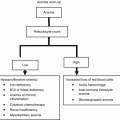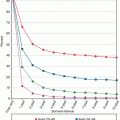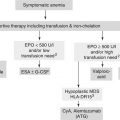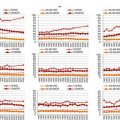Year
Author
Number
Median age
Treatment
Outcome
Therapy associated death rate
Comment
1994
Levis et al.
[27]
65
72 years
ABVD; MOPP/ABVD
CR 67 %
8 year OS 46 %
8 year EFS 41 %
23 %
Elderly treatment related mortality 23 % in ABVD regimens
2002
Weekes et al.
[2]
56
ChlVPP (31)
ChlVPP/ABV (25) 25
5 year OS 30 %
5 year EFS 24 %
5 year OS 67 %
5 year EFS 52 %
13 %
16 %
Inclusion of an Anthracycline important to better outcomes in the elderly
2005
Ballova et al.
[25]
68
70 years
COPP/ABVD
BEACOPP baseline
CR 77 %
5 year OS 50 %
CR 76 %
5 year 50 %
8 %
21 %
High TRM with dose intensive regimens
Note Limited efficacy ABVD in elderly populations
2013
Evens et al.
[24]
44
65 years
Stanford V/ABVD
5 Year OS
Young 90 %
Elderly 58 %
0.3 % young
9 % elderly
Outcome older versus younger significantly worse
24 % Bleomycin toxicity in the elder group
In younger patients ABVD has been very successful treatment for advanced stage disease however in the more elderly population results with the regimen are inferior. The regimen includes Doxorubicin and Bleomycin and this is of concern in patients who carry attendant cardiorespiratory co-morbid illness. The CALBG group reported 5 years OS of 31 % versus 79 % for patients less than 40 years. In a further study Levis et al. comparing ABVD vs. hybrid regimen of ABVD/MOPP found results in patients >65 years with 8 year event free survival (EFS) of 41 % and overall survival of 46 %. Importantly these poor survival rates were in part due to the high reported a treatment related mortality TRM of 23 % observed with the use of ABVD/MOPP like chemotherapy [26].
In a further study reporting [24] the American intergroup trial E2496 44 patients aged >60 years were entered into the study and received either ABVD or the Stanford V regimen. No survival difference was reported between the ABVD and Stanford V arms. However the incidence of Bleomycin lung toxicity was reported to be as high as 24 %, of which the majority occurred in the ABVD arm and an resultant associated Bleomycin mortality rate of 18 % was observed [24]. Exploratory analyses compared outcomes on the basis of age, which confirmed a higher treatment related mortality rate in more elderly patients of 9 % vs. 0.3 % for patients <60 years (p < 0.001) and reported a 5 years OS of 58 % compared to 90 % for younger patients (p < 0.0001). When a competing risk analysis model was performed, the results suggested a major component of age dependent survival in HL was due to non- HL related events which emphasises the need for optimal co-morbid disease control in more elderly patients being treated for HL.
High intensity regimens such as escalated BEACOPP were tested in the GHSG HD9 prospective elderly trial and were randomised to receive either eight course of BEACOPP or eight courses of COPP-ABVD. The disease free specific freedom from treatment failure at 5 years was 74 % for BEACOPP and 55 % for COPP-ABVD. However the high toxic TRM rate of 21 % in patients greater than 60 years treated with BEACOPP resulted in equivalence in OS rates of 50 % in both arms, negating any benefit derive from dose intensification in this group [25]. As would be predicted the main cause of mortality in these patients was neutropaenic sepsis and in subsequent studies the use of antibiotic prophylaxis was mandated. In a subsequent multivariate analysis conducted to define factors associated with TRM, a simple algorithm to define a risk score identified the major risk factors as increased age ≥40 years and poor performance status (≥2) [26] and this underscores the toxicity and futility of intensive regimens like this in the more elderly patient.
Lower Intensity Regimens
In an effort to limit ABVD toxicity other less intensive regimens have been tried but with limited success. Levis et al. tested the CVP/CEB regimen which although producing less treatment related mortality resulted in higher relapse rates and a 5 year relapse free survival of 43 % [27]. A further retrospective study carried out by the Nebraska Lymphoma Study Group investigated the importance of anthracyline in drug combinations and randomised ChlVPP (Chlorambucil, vinblastine, procarbazine and prednisolone) versus the combination of ChlVPP/ABV. The 5 year event free survival (EFS) was 24 % treated with ChlVPP alone versus 52 % for those treated with the combination regimen (p = 0.011) and 5 Year OS was 30 % versus 67 %. In a subsequent multivariate analysis the use of Doxorubicin was the only factor associated with superior outcomes and therefore remains important in the treatment of elderly HL patients [2]. A further study tested the VEPMB regimen (Vinblastine, cyclosphamide, procarabazine, etoposide, mitoxoantrone, Bleomycin) in which 57/105 patients with advanced disease received 6 cycles of treatment with consolidation radiotherapy to either bulky disease or residual mass. A reported a CR rate of 58 % at the end of treatment was noted with a 5 year FFS and OS of 34 and 32 % [18]. A further study randomised VEPEMB against ABVD and reported a 3 Year OS and EFS for ABVD and VEPMB of 79 % vs. 60 % (p = ns) and 52 % vs. 24 % (p = 0.08) [28].
Tailored Specific Elderly Directed Treatment Regimens (Table 10.2)
Table 10.2
Selected results Elderly directed non ABVD regimens
Name | Number Median age | Regimen | Outcome | Therapy associated death rate | Comment |
|---|---|---|---|---|---|
2007 Kolstad et al. [30] | 29 71 years | CHOP-21 | CR 72 % 3 year OS 79 % 3 PFS 76 % | 7.0 % | Small numbers |
2010 Halbsguth et al. [23] | 65 67 years | BACOPP | CR 88 % 3 year OS 71 % 3 year PFS 60 % | 12 % | Still unacceptable TRM |
2011 Boll et al. [29] | 59 68 years | PVAG | CR 78 % 3 year OS 66 % 3 year PFS 58 % | 1.7 % | Low TRM |
2012 Proctor et al. [17] | 103 73 years | VEPEMB + radiotherapy Early stage VEPEMB × 6 Advanced stage | Early stage CR 74 % 3 year OS 81 % 3 year PFS 74 % Advanced stage CR 61 % 3 year OS 66 % 3 year PFS 58 % | 7.0 % | Achievement of CR significant for OS CR, co-morbidity, age, significant for PFS EBV status no significant effect on outcome |
In a search to develop tailor made elderly specific regimens to aim to deliver with curative intent, the GHSG have reported on two newer regimens in the elderly; BACOPP (Bleomycin, doxorubicin, cyclophosphamide, vincristine, procarbazine and prednisolone and PVAG (prednisolone, vinblastine, doxorubicin, and gemcitabine) in elderly untreated patients with HL. In the BACOPP regimen where etoposide was omitted to improve treatment related mortality the CR rate attained was 85 % and the 3 year PFS and OS 60 and 71 % respectively. However the regimen was associated with significant toxicity with 30 % of patient experiencing early termination (87 % with adverse grade III-IV adverse events) and a still reported TRM of 12 % making the regimen unsuitable [23]. The PVAG regimen replaced the Bleomycin and Dacarabazine in ABVD with Gemcitabine and Prednisolone. A CR rate of 78 % was achieved and the 3 year PFS and OS of 58 and 66 % was achieved with a lower TRM of 2 % [29].
Kolstad and colleagues reported excellent results using the NHL regimen CHOP for elderly patients. 29 patients were treated with CHOP-21 for both early stage (2–4 cycles with IFRT) and advanced stage (6–8 cycles +/− IFTR). The CR rate was an impressive 93 % with a median follow up of 41 months and 3 year PFS and OS for advanced stage patients of 67 and 72 % respectively. This regimen may be useful in elderly patients where significant pulmonary co-morbidity is present and where avoidance of Bleomycin is desirable [30]. In a further effort to reduce cardiotoxicity, the use of VEPEMB (vinblastine, cyclosphosphamide, procacarabazine, etoposide, mitoxoantrone, bleomycin) regimen was tested in early and late stage disease reporting a CR rate of 98 % for early stage disease and 58 % for advanced stage patients. Five year FFS was 79 and 34 % for early and late stage disease respectively [18]. In a multivariate analysis stage, B symptoms and co morbidity maintained their independent prognostic value in affecting OS, DSS, and FFS. A follow on UK phase II study further tested the VEPEMB protocol and incorporated a co-morbidity assessment to define patients into a curative treatment approach (non-frail group) or define those as too frail to enter the treatment arm. This study permitted treating centres to record “all” patients in a population based study. A total of 103 patients of which 72 with advanced disease were designated non frail and eligible for VEPMB treatment. The reported CR rate was 61 % and 3 year PFS and OS for the advanced stage patients was 58 and 66 % respectively. Overall treatment related mortality was 7 %. A further 54 non frail patients either received ABVD, or ChlVPP chemotherapy. In all arms of the study with treatment with curative intent (n = 157), achievement of CR remained significant for OS and CR plus co-morbidity and age for PFS. Although the regimen contains Bleomycin pulmonary toxicity demonstrated was minimal [17]. None of those designated as frail completed or responded to chemotherapy, and the authors concluded that a novel agent approach may afford better outcomes in this group compared to chemotherapy. A further advance afforded by this study is that the suitability of patients to receive curative multi [31] agent chemotherapy was stratified by co-morbid assessment and other well defined measures such as ADL, IADL and ECOG which ensured a consistent assessment to stratify patient groups.
Newer Paradigms: Novel Targeted Approaches and Strategies to Improve Outcomes in the Elderly Population (Table 10.3)
Table 10.3
New agents tested in relapsed/refractory Hodgkin lymphoma
Name | Number | Mechanism | Outcomes | Toxicity | Comment |
|---|---|---|---|---|---|
Brentuximab Vedotin [32] 2012 | 102 | Antibody drug conjugate | ORR 75 % CR 34 % | Neuropathy 42 % typically grade I/II
Stay updated, free articles. Join our Telegram channel
Full access? Get Clinical Tree
 Get Clinical Tree app for offline access
Get Clinical Tree app for offline access

|




